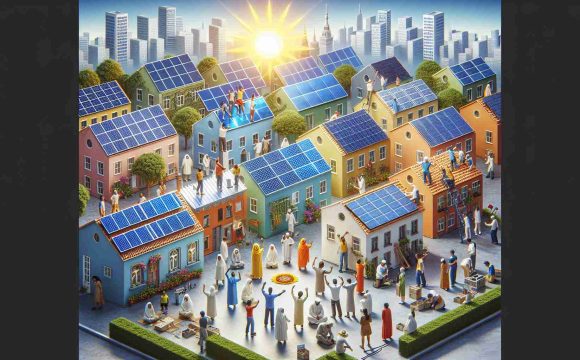The Rise of Solar Energy in the U.S.
Recent reports indicate a significant boom in solar energy installations in the United States, setting the stage for an energy transformation. By the end of 2024, the nation is on track to deploy nearly 50 gigawatts (GW) of solar modules, marking an impressive 25% increase compared to the previous year.
Data from Ohm Analytics reveals that during the first three quarters of 2024, around 6 GW was added to the distributed generation solar market. Experts anticipate that the total amount could reach 8.1 GW by year’s end. This late-year rush often occurs as solar property owners aim to complete projects and secure the Investment Tax Credit before the year’s close.
The utility-scale solar sector is expected to contribute significantly, with projections estimating 32 GW of solar interconnection capacity by the conclusion of 2024. When this capacity is converted to solar module capacity, it translates to an estimated 40 to 41.6 GW of new solar panels, using a multiplier from prior years.
When combining the anticipated 8.1 GW of distributed generation with the utility-scale efforts, the overall deployment could reach between 48.1 GW and 49.7 GW, putting the U.S. on the brink of achieving that landmark 50 GW target. This surge underscores America’s commitment to renewable energy and its evolving energy landscape.
Unveiling the Solar Revolution: What’s Next for Solar Energy in the U.S.?
The Rise of Solar Energy in the U.S.
The solar energy landscape in the United States is undergoing a remarkable transformation, with projections indicating an unprecedented surge in installations. As the nation gears up to deploy nearly 50 gigawatts (GW) of solar modules by the end of 2024, this progress signifies a pivotal shift towards renewable energy solutions. This article delves deeper into the trends, insights, and implications surrounding this solar boom.
Key Trends in Solar Energy Deployment
1. Rapid Growth in Distributed Generation:
The distributed generation solar market is experiencing robust growth, adding about 6 GW in the first three quarters of 2024. With expectations to reach 8.1 GW by year’s end, this sector illustrates the increasing adoption of solar energy at residential and small commercial levels.
2. Utility-Scale Solar Expansion:
The utility-scale sector is set to play a vital role in this solar expansion. Projections for 32 GW of solar interconnection capacity highlight the anticipated investment and infrastructure development in centralized solar facilities. This growth is crucial for meeting the energy demands of larger populations and industries.
Environmental and Economic Impact
– Job Creation: The solar energy sector is a significant employer, creating thousands of jobs. As installations ramp up, businesses related to solar technology, manufacturing, and installations will see a boost, which contributes to local economies.
– Reduction in Greenhouse Gas Emissions: Moving towards solar power not only offers energy independence but also plays a critical role in reducing carbon footprints. Adopting solar energy significantly lowers greenhouse gas emissions, promoting a healthier environment.
Challenges and Limitations
– Interconnection and Infrastructure: While growth in solar capacity is promising, the challenge of interconnecting new solar installations to the grid remains. Upgrades to the current grid infrastructure may be necessary to accommodate this influx of renewable energy.
– Market Fluctuations: The solar market is still subject to fluctuations related to policy changes, tariff implications, and technology advancements. Consistent federal and state support will be essential for sustaining growth in solar deployments.
What to Expect in 2025 and Beyond
As we move past 2024, the solar energy sector is expected to continue its trajectory of growth.
– Innovation in Technology: Advances in solar technology, such as higher efficiency panels and energy storage solutions, will likely improve performance and affordability. This innovation will make solar energy more accessible to a broader audience.
– Sustainability Trends: The trend toward sustainability is gaining momentum across industries, pushing businesses to implement solar solutions not just as an energy strategy but as a key component of their corporate social responsibility.
Conclusion
The U.S. solar energy market is on the cusp of achieving significant milestones, and while the journey presents challenges, the direction is clear. As technology continues to evolve and public policy supports renewable energy growth, solar power is set to become an even more vital part of the nation’s energy portfolio.
For more insights on renewable energy trends and solar technology innovations, visit SEIA.







